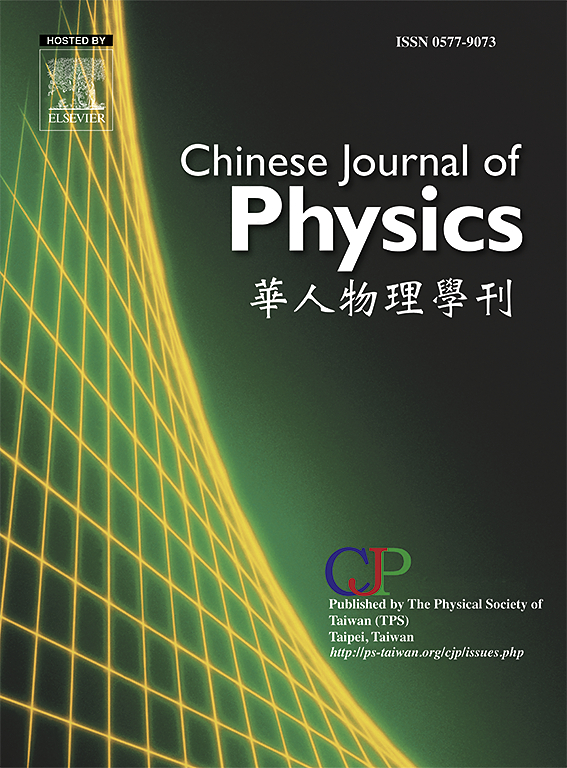Electronic structure regulation of AlN/SiC nanoribbons through edge passivation with different atoms and doping with various transition metal atoms
IF 4.6
2区 物理与天体物理
Q1 PHYSICS, MULTIDISCIPLINARY
引用次数: 0
Abstract
In this paper, based on first principles, density functional theory is used to investigate the doping of transition metal atoms (Mn, Fe, Co, Ni) in AlN/SiC nanoribbons with edge passivation by different atoms (Cl, F, H, O) to induce magnetism and modulate properties. The research results show that the new structures proposed in this study with doping of transition metal atoms induce magnetism and a transition of properties. First, calculations determined the ferromagnetic coupling state to be the most stable state of the initial magnetic structure. Then, band structures, the density of states, and charge densities were analyzed to investigate the transition of properties. The AlN/SiC nanoribbons with Ni doping in Cl, F, and H atom edge-passivated structures all transitioned to half-metallic properties. Half-metal properties appeared in the AlN/SiC nanoribbons with Fe and Co doping in O atom edge-passivated structures, enabling the generation of 100 % spin-polarised current at the Fermi level. In addition, other structures exhibited properties of narrow bandgap semiconductors and metals. Furthermore, we used molecular dynamics simulations to verify the stability of the structures, demonstrating that the structures proposed in this study can stably exist. This provides more ideas and potential applications for the development of spintronics devices.

求助全文
约1分钟内获得全文
求助全文
来源期刊

Chinese Journal of Physics
物理-物理:综合
CiteScore
8.50
自引率
10.00%
发文量
361
审稿时长
44 days
期刊介绍:
The Chinese Journal of Physics publishes important advances in various branches in physics, including statistical and biophysical physics, condensed matter physics, atomic/molecular physics, optics, particle physics and nuclear physics.
The editors welcome manuscripts on:
-General Physics: Statistical and Quantum Mechanics, etc.-
Gravitation and Astrophysics-
Elementary Particles and Fields-
Nuclear Physics-
Atomic, Molecular, and Optical Physics-
Quantum Information and Quantum Computation-
Fluid Dynamics, Nonlinear Dynamics, Chaos, and Complex Networks-
Plasma and Beam Physics-
Condensed Matter: Structure, etc.-
Condensed Matter: Electronic Properties, etc.-
Polymer, Soft Matter, Biological, and Interdisciplinary Physics.
CJP publishes regular research papers, feature articles and review papers.
 求助内容:
求助内容: 应助结果提醒方式:
应助结果提醒方式:


